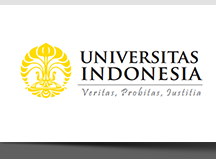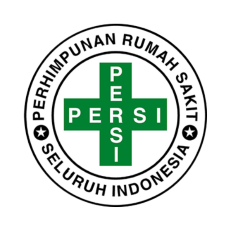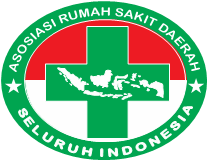Abstract
The performance of hospital blood transfusion services is crucial for patient safety and overall operational effectiveness. Blood management, as a vital and limited resource, plays a significant role. Traditional centralized blood management models often face challenges regarding response speed, potential waste, and quality control. As an alternative, Unit Pengelola Darah Rumah Sakit (UPDRS) offers the potential for performance enhancement. This narrative literature review is based on 16 relevant scientific articles identified through a database search (Scopus, Proquest, Wiley, Google Scholar) and a selection process visualized with a PRISMA diagram. Key findings identified significant impacts on cost efficiency, time efficiency (faster Turnaround Time), blood utilization (waste reduction, improved C:T ratio), and service quality and safety. Overall, the role of UPDRS tends to be positive for performance enhancement, particularly in speed and utilization, but its impact is contextual and requires strong internal management and adequate investment. Implementation challenges such as initial costs and regulations need to be considered.
References
Frelitz, A.J. (2016) ‘Impacts of Updated Transfusion Guidelines on a Small Hospital Blood Bank in a Chicago Suburb’, American Society for Clinical Laboratory Science, 29(1), pp. 16–20. Available at: https://doi.org/10.29074/ascls.29.1.16.
Gammon, R.R. et al. (2024) ‘Patient blood management, past, present and future’, Annals of Blood, 9, pp. 7–7. Available at: https://doi.org/10.21037/aob-22-45.
Gupta, V. et al. (2019) ‘Cord Blood Banking: Antenatal Care Provider’s Roles and Responsibilities’, Stem Cells International, 2019, pp. 1–7. Available at: https://doi.org/10.1155/2019/3598404.
Hajjaj, O.I. et al. (2024) ‘Reducing blood product wastage through the inter‐hospital redistribution of near‐outdate inventory’, Transfusion, 64(7), pp. 1207–1216. Available at: https://doi.org/10.1111/trf.17876.
Hess, J.R. et al. (2017) ‘Building a New Transfusion Service’, American Journal of Clinical Pathology, 148(2), pp. 173–178. Available at: https://doi.org/10.1093/ajcp/aqx057.
Inanc, B.C. et al. (2017) ‘Policy Analysis with Simulation: Centralization of Blood Supply Chain’, in Proceedings of the 7th International Conference on Simulation and Modeling Methodologies, Technologies and Applications. SCITEPRESS - Science and Technology Publications, pp. 56–64. Available at: https://doi.org/10.5220/0006404100560064.
Kaya, O. and Ozkok, D. (2020) ‘A Blood Bank Network Design Problem with Integrated Facility Location, Inventory and Routing Decisions’, Networks and Spatial Economics, 20(3), pp. 757–783. Available at: https://doi.org/10.1007/s11067-020-09500-x.
Kumar, Dr.S., KP, Dr.A. and Bommannahalli, Dr.B.P. (2019) ‘A descriptive study of utilization of blood and blood components in a tertiary care hospital, Gadag’, International Journal of Clinical and Diagnostic Pathology, 2(2), pp. 131–135. Available at: https://doi.org/10.33545/pathol.2019.v2.i2c.89.
Kumari, S. (2017) ‘Blood transfusion practices in a tertiary care center in Northern India’, Journal of Laboratory Physicians, 9(02), pp. 071–075. Available at: https://doi.org/10.4103/0974-2727.199634.
Lilienstein, J. et al. (2025) ‘Don’t break the (blood) bank: Can waste be minimized in a whole blood program?’, The American Journal of Surgery, 240, p. 116082. Available at: https://doi.org/10.1016/j.amjsurg.2024.116082.
Moshtagh, M.S., Zhou, Y. and Verma, M. (2022) ‘Coordinating a Decentralized Blood Supply Chain with Interactions between Supply-Side and Demand-Side Operational Decisions’, SSRN Electronic Journal [Preprint]. Available at: https://doi.org/10.2139/ssrn.4287750.
Najafi, M., Ahmadi, A. and Zolfagharinia, H. (2017) ‘Blood inventory management in hospitals: Considering supply and demand uncertainty and blood transshipment possibility’, Operations Research for Health Care, 15, pp. 43–56. Available at: https://doi.org/10.1016/j.orhc.2017.08.006.
O’Brien, K.L., Mohammed, M. and Uhl, L. (2018) ‘Management of a Hospital Transfusion Service During a Nationwide Blood Product Shortage’, Archives of Pathology & Laboratory Medicine, 142(7), pp. 779–781. Available at: https://doi.org/10.5858/arpa.2017-0483-LE.
Prioli, K.M. et al. (2016) ‘Cost of Purchased Versus Produced Plasma from Donor Recruitment Through Transfusion’, Applied Health Economics and Health Policy, 14(5), pp. 609–617. Available at: https://doi.org/10.1007/s40258-016-0255-0.
Staples, S. et al. (2024) ‘Opportunities to improve feedback to reduce blood component wastage: Results of a national scheme evaluation’, Transfusion, 64(7), pp. 1223–1232. Available at: https://doi.org/10.1111/trf.17874.
Waheed, U. et al. (2020) ‘Haemovigilance as a quality indicator in transfusion medicine: Pakistan’s perspective’, 16(1), pp. 46–51. Available at: https://doi.org/https://doi.org/10.48036/apims.v16i1.353.
Zaheer, H.A. and Waheed, U. (2016) ‘Impact of Regulation of Blood Transfusion Services in Islamabad, Pakistan’, Global Journal of Transfusion Medicine, 1, pp. 29–31. Available at: https://doi.org/10.4103/2455-8893.178003.
Bahasa Abstract
Kinerja layanan transfusi darah rumah sakit menjadi krusial bagi keselamatan pasien dan efektivitas operasional secara keseluruhan. Pengelolaan darah sebagai sumber daya vital dan terbatas, memegang peranan penting. Model pengelolaan darah tradisional yang tersentralisasi seringkali menghadapi tantangan terkait kecepatan respons, potensi pemborosan, dan kontrol kualitas. Sebagai alternatif, Unit Pengelola Darah Rumah Sakit (UPDRS) menawarkan potensi peningkatan kinerja. Studi ini merupakan tinjauan literatur naratif berdasarkan 16 artikel ilmiah relevan yang diidentifikasi melalui pencarian database (Scopus, ProQuest, Wiley, dan Google Scholar) yang proses seleksi divisualisasikan dengan diagram PRISMA. Temuan utama studi ini menunjukkan adanya dampak signifikan pada efisiensi biaya, efisiensi waktu (Turnaround time yang lebih cepat), utilisasi darah (pengurangan pemborosan, perbaikan rasio C:T), serta peningkatan kualitas dan keselamatan pelayanan. Secara keseluruhan, peran UPDRS cenderung positif terhadap peningkatan kinerja, terutama dalam hal kecepatan dan utilisasi. Akan tetapi, UPDRS bersifat kontekstual dan memerlukan manajemen internal yang kuat serta investasi memadai. Tantangan implementasi seperti biaya awal dan regulasi perlu dipertimbangkan.
Recommended Citation
Marsaban, Adhika Putra and Nadjib, Mardiati
(2025)
"Peran Unit Pengelola Darah Rumah Sakit Terhadap Peningkatan Kinerja Layanan Transfusi Darah: Tinjauan Literatur Naratif,"
Jurnal ARSI : Administrasi Rumah Sakit Indonesia: Vol. 11:
No.
2, Article 3.
DOI: 10.7454/arsi.v11i2.1216
Available at:
https://scholarhub.ui.ac.id/arsi/vol11/iss2/3
Included in
Health and Medical Administration Commons, Other Medicine and Health Sciences Commons, Public Health Commons







